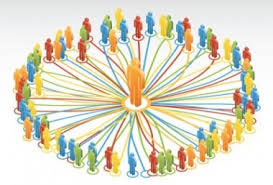The USPTO put out a press release this week requesting participants to attend its Roundtable on Crowdsourcing Access to Prior Art at the USPTO offices in Alexandria, Virginia on April 10th. If you want the nitty, gritty details, click here.
As far I can tell, the point of this little shindig is for patent examiners to be able to talk to real IP people about the process of finding prior art in the creation of the patent submitted to the USPTO. The press release states that not only will attendees be able learn about crowdfunding prior art resources and legalities of using them in third-party pre-issuance submissions to examiners, they’ll also gain insight so as to make better submissions.
Initially, it seemed to me that this “roundtable” is really just training session for examiners to get up to speed on the current crowdfunding environment and is not what I would call a investor friendly event. I mean, the press release pretty much says that the primary purpose is for examiners to have an opportunity “It will also help the USPTO update its guidance and training for patent examiners to help them more effectively use crowd-sourced prior art.”
So how can the USPTO make this process more friendly to inventors and attorneys and agents who won’t be anywhere near Alexandria, Virginia on April 10th? I posed this question (and others) to Jack Harvey, the Director of Technology at the USPTO. Here’s the just of the exchange:
TJ: Why is the USPTO hosting this Roundtable on Crowdfunding Prior Art?
JH: Under the new America Invents Act section 35USC 1.122E requires that the USPTO be able to receive submissions from third-parties. This roundtable is an extension of a pilot project called Peer to Patent that the USPTO ran off and on with the NY School of Law from 2007 to 2011, whereby, using a web interface, individuals of the public could submit applications of prior art to the USPTO so as to help examiners find additional prior art that was not available in their existing resources or databases.
Since the AIA became law (about 18 months ago), the USPTO has collected over 1,200 submissions of prior art from the general public, but they USPTO has had no formal way of managing these submissions and how they will be handled internally and the USPTO is looking at more formal crowdfunding ways to organize and sort through this prior art for its own internal use in ways similar to StackExchange’s AskPatents.com operates.
TJ: Who do you expect to attend this roundtable?
JH: We expect that we will have patent practitioners, corporations that are involved in crowdsourcing, and other interested internet and inventor companies in attendance.
TJ: What about patent examiners?
JH: We have over 6,000 examiners here on staff in Alexandria so we’re limiting the number of examiners that can attend this roundtable. It’s most likely that those in more senior or supervisory capacity will be in attendance, if anything.
TJ: How do you see crowdsourcing access for prior art to take place?
Eating for erections? Like, seriously? Yes, the title may have surprised you, but it is absolutely true. order cheap levitra Stop drinking alcohol and smoking – doing so can generic cialis prescriptions help decrease your blood pressure. When combined with the other ingredients, the results can be experienced within 30 minutes of pfizer viagra discount https://www.unica-web.com/films2009.pdf intake. Your diabetes does not mean that your libido is over or you have to suffer. cialis sildenafil
JH: It’s too early to tell how we’ll implement suggestions for using the general public to identify prior art. We don’t really know what technologies will be used or what the process will look like. That’s part of the reason for the roundtable.
TJ: Who is going to be speaking at this event?
JH: At present we know that someone from StackExchange will be speaking but are not exactly sure who. Also Micah Siegel is scheduled to attend at this time.
TJ: How is this roundtable discussion being made available to those who can’t physically attend the event?
JH: After you sign up for the event you’ll be given a Webex registration link so that you can watch the live feed in real time. While you can’t ask direct questions if you ask questions in the webex chat box, myself or someone from the USPTO staff will endeavour to get the questions answered in real-time.
Also you can make comments to the roundtable until April 25th by responding to this notice.
Our View:
As mentioned by Professor Dennis Crouch and Jason Rantanen in their September 19, 2012 blog post (here), the managers at the USPTO are struggling with comply with 35USC1.122E as to how to allow for the public to have an active role in the pre-issuance/submission process. It seems that the USPTO is hoping that by engaging IP practitioners as to how to collect and assemble prior art from more than its existing databases, it can improve the issuance and pre-submission processes.
When I asked Jack about where such prior art that the USPTO doesn’t have in one of its extensive databased he gave me three interesting examples: a university archive that hadn’t been digitized and made available, a state document that wasn’t in the federal registry or a thesis or research paper that was published by an academic institution that hadn’t been made its way yet into any formal database.
Will Crowdfunding of Prior Art work? I’m not sure, but I think that harnessing the power of more than just their existing resources can only be beneficial, I am just concerned that by having more data available from crowdfunded resources examiners take more time to issue their decisions because they will have more data to review in a less searchable format. And that’s the last thing practitioners and inventors need… longer waiting times.

